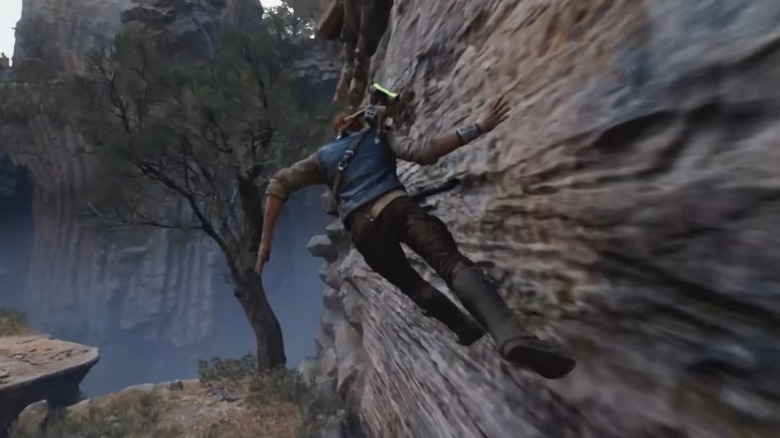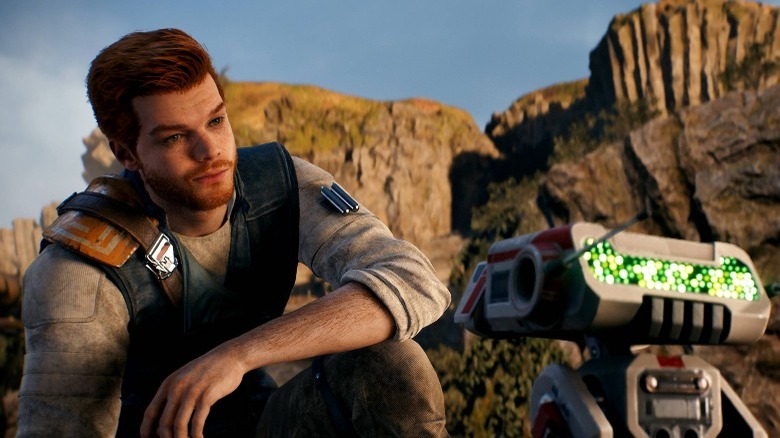Star Wars Jedi: Survivor — What Is Slow Mode?
"Star Wars Jedi: Survivor" is introducing a new accessibility feature called 'Slow Mode.' Features like this have been a growing trend in the AAA gaming space over the last few years. They've been a major selling point in titles like "The Last of Us: Part 1" and "Ratchet and Clank: Rift Apart," which put them at the forefront of their design. This is good news as these options open the games up to audiences who might not have otherwise been able to play. Different settings might allow for different accommodations, such as visibility settings, auditory settings, and settings that help make games a little easier to play for those with a restricted range of motion. Slow Mode belongs to the latter category.
Respawn Entertainment is adding this accessibility feature in an effort to make the game's platforming mechanics a little easier to navigate for players who might have reflex or mobility issues. This could make the exploration portions of the game a lot more manageable for those who may have found them otherwise frustrating or even impossible, but many gamers are wondering what Slow Mode is and how it works.
What Slow Mode does
Much like in "Star Wars Jedi: Fallen Order," a major portion of "Survivor" is spent platforming across the various alien planets that the protagonist, Cal Kestis, visits during his journey. Players will have to climb, shuffle, and leap across the various forms of perilous terrain that they encounter whilst exploring. Navigating these treacherous environments can require quick reactions from the player in order to keep Cal from falling to his untimely death. This can be a lot of fun for some players, but it can also be incredibly frustrating for those whose physical limitations cause them to struggle to react quickly enough. That's where Slow Mode Comes in.
EA recently shared a post on the "Star Wars Jedi: Survivor" website about the game's accessibility features. "One of the options that we're most excited for our players to discover is our Slow Mode toggle, which allows players to slow down the action of the world in order to ease the challenge of both combat and platforming," wrote Senior Director of Development Jonas Lundquist. Essentially, players will be able to bind Slow Mode to a control that they can then use to toggle the mode on and off. This will allow them to easily switch back and forth so that they can use the mode when they need it, but play the rest of the game in regular time.
Why Slow Mode is important
Respawn Entertainment had numerous accessibility features planned for "Survivor" from the beginning, but it seems that Slow Mode had its origins as something of a happy accident. "It primarily started out as a feature that we thought would be helpful in combat, but quickly realized that it could be beneficial for anything that had a timing component," Lundquist stated. "It opens up some of our platforming to be more accessible, allows for different reaction times, and helps make the game generally more accessible to a larger audience."
This could end up being a godsend for some players. Imagine trying to leap from one ledge to another, only to be thwarted by the same quick-time event over and over. Slow Mode could be the thing that keeps players gaming who might have otherwise been forced to put down their controller when they come up against a reaction window they simply can't match. The screenshot displayed in the post also shows an option to turn on an auto-activated Slow Mode for combat and the ability to adjust Slow Dilation, giving players even more control.
Several other accessibility options will be released with the game as well, including Camera options for Auto-Targeting, button mash options, Hold/Pull Toggles, and Navigation Assist. EA's post also states that new features will continue to be added after launch "including a high contrast mode and menu narration." Hopefully, these features will open the game up to even more players.



